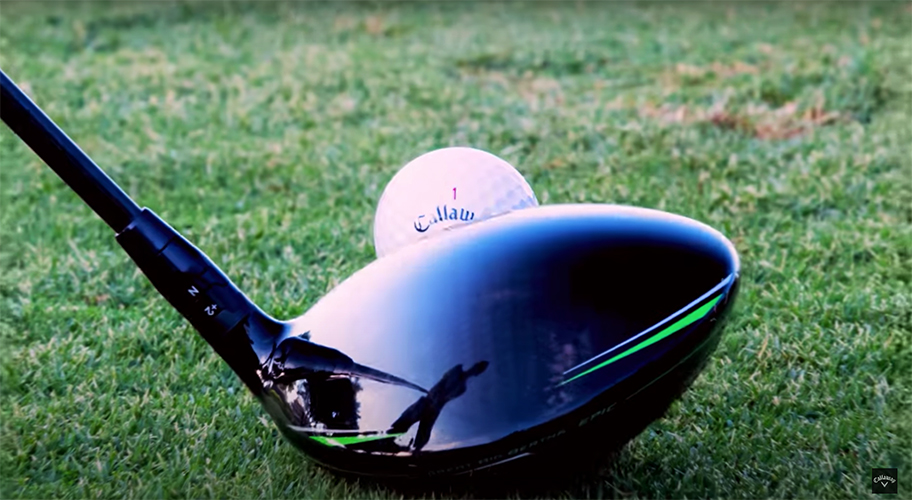By Eric Smith
<span style="color: #a1a1a1;">Callaway Golf Co. was one of the first companies to publicly discuss the coronavirus.
When the manufacturer of golf and outdoor equipment and apparel reported fourth-quarter 2019 earnings back in early February, President and CEO Chip Brewer warned of the coming impact to Callaway’s supply side and the lagging hit to sell-in and sell-through.
Those concerns came to fruition this week when Callaway reported first-quarter net sales decreased 14 percent to $442 million from the year-ago quarter due to the negative impact of the COVID-19 pandemic on both the golf equipment and soft goods operating segments globally.
That total beat Wall Street’s expectations by $1.6 million, and the overall decrease was partially offset by an increase in net sales in Japan and Korea—two countries that have recovered from the coronavirus more quickly than others—as well as with Callaway’s TravisMathew business. Changes in foreign currency rates also had a $4 million negative impact on first-quarter 2020 net sales.
First-quarter 2020 earnings per share of 30 cents were down from 50 cents in the first quarter of 2019, in-line with Wall Street’s projections. Non-GAAP EPS of 32 cents beat by 2 cents.
“We are pleased that during the first quarter of 2020 our golf equipment market shares remained strong in all of our major markets and that we were able to deliver a profitable quarter despite the negative impact of COVID-19,” Brewer said.
But Brewer is hopeful that the short-term pain will eventually yield to long-term success as the golf industry returns to normal. After all, the sport is a natural fit for this new world of keeping six feet away from one another.
“Through early March we were on track for another record sales year, which would have made it our fourth consecutive record year,” Brewer said. “While the COVID-19 pandemic will have a significant impact on our results in the short-term, we believe we will be well-positioned to emerge from this pandemic. Our golf and outdoor lifestyle businesses support an active and healthy lifestyle that is compatible with a world of social distancing. We are also pleased that we are beginning to see some signs of recovery, particularly in those regions that were first affected.”
Callaway also said last week that it’s planning to offer $200 million in convertible senior notes that mature in 2026. The company is planning to reduce the potential dilution of issuing new shares by entering capped call transactions with one or more dealers.
“The issuance of our convertible notes was well received by the market, allowing us to obtain favorable pricing and terms,” Brewer said. “This additional liquidity will provide a comforting backstop in the event that the duration or impact of the COVID-19 pandemic is longer or more severe than anticipated. I want to emphasize, however, that having this additional liquidity will not lessen our resolve for, and we remain committed to, maintaining our disciplined approach to managing capital and expenses. We believe that this additional liquidity, together with the strength of our brands, our product and geographic diversity, and the operational improvements we have made to date, will enable us to create shareholder value as we emerge from this pandemic.”

Callaway was hit elsewhere in its Q1 financial report. Gross margin decreased 200 basis points to 44.2 percent compared to 46.2 percent for the first quarter of 2019, primarily attributable to the impact of the COVID-19 pandemic, as well as the negative impact of changes in foreign currency rates, increased tariffs on imports from China, and non-recurring redundant costs associated with transitioning the company’s North American distribution center to a new facility.
But operating expenses also decreased, down $14 million to $155 million in the first quarter of 2020 compared to $169 million for the same period in 2019. This decrease was due to the cost reduction actions the company began in March in response to the COVID-19 pandemic, lower variable expenses associated with the reduced sales and by a reduction in non-recurring acquisition and transition costs related to the Jack Wolfskin acquisition.
Callaway, like most other publicly traded companies, is no longer providing financial guidance at this time, but the question remains: What’s in store for golf manufacturers as states relax stay-at-home guidelines and allow retailers to again open their doors to customers?
…
As SGB Executive outlined in our recent deep dive on the coronavirus’ impact on the golf industry, golf equipment manufacturers have dealt with unprecedented headwinds on the supply side, but now they face sell-in issues as retailers sit on a glut of inventory.
For example, Callaway had already lowered its outlook for 2020 because the coronavirus is “estimated to have a negative impact of $25 million on sales [into China] and $13 million on EBITDA” for the year, according to CFO Brian Lynch.
The situation actually could’ve been worse for Callaway, which last year shifted some of its manufacturing due to the U.S.-China trade war, something many businesses did to avoid the added tariffs from imports.
But some potential green shoots exist across the industry. KeyBanc Capital Markets included Callaway in a March note to investors titled “Stock Ideas to Consider Now.” The analysts wrote that they “expect golf (as both a sport and as an industry) to continue to benefit as consumers are unable to participate in most indoor-based/large crowd activities (movie theaters, sporting events, etc.).”
Callaway, however, has certainly struggled, with reported layoffs and furloughs across its business. But while Callaway’s stock (NYSE: ELY) is down about a third since late January, shares have rebounded somewhat as golf courses and stores reopen for business.
Photos courtesy Callaway
















